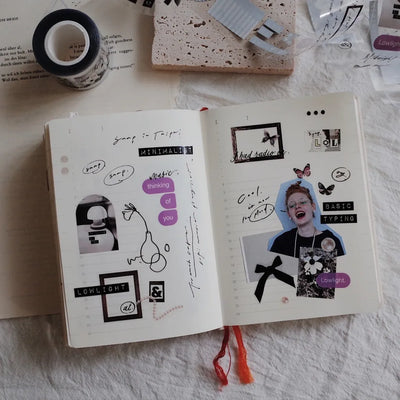
Kyo-no-oto Fountain Pen Ink / Ochiguriiro
Kyo-No-Oto and Kyo-Iro fountain pen inks are made in Kyoto, Japan using traditional dyeing techniques. The colours are inspired by famous and fascinating places in Kyoto which are the expression of its rich history and profound culture for a long time.
Kyo-No-Oto (京の音) 40ml Bottle Ink
NO.1 濡羽色 – Nurebairo
‘Nurebairo’ has been used to represent women’s glossy black hair, which is like the crow’s feather.
NO.2 今様色 – Imayouiro
‘Imayouiro’ is a safflower red that is popular during the Heian era. According to Japanese ancestors, it was a ‘modern colour’ and had been preferred by women.
NO.3 苔色 – Kokeiro
‘Kokeiro’ is a colour that is inspired by one of the Japanese aesthetics ‘Wabisabi’. It can be seen in the garden of Kyoto where you can catch a glimpse of Kyoto’s profound culture.
NO.4 山吹色 – Yamabukiiro
‘Yamabuki’ is the plant, Rosaceae, from the rose family. This is a gold tinged brilliant colour and has been used since ancient times.
NO.5 青鈍 – Aonibi
Moon floating in the dark sky, the Kyoto city with silent moonlight. ‘Aonibi’ is the combined colour between pale black and indigo. It represents the sacred atmosphere.
NO.06 小豆色 - Adzuki
“Adzuki” color refers to reddish brown with purple, just like red bean. Red has been used as a color of prayer since long ago; red rice with red beans is indispensable for celebrations and occasions.
NO.07 秘色 - Hisoku
“Hisoku” is a pale green color like the color of a celadon, and this color name is attached because the blue green color with a gray unique ash is a mysterious beauty.
NO.08 裏葉色 - Urahairo
“Urahairo” can be translated to English as underside of a leaf. 'Ura' means 'underside' and 'Ha' means 'leaf. Since the Heianera when Kyoto was the capital of Japan, people loved this color and used it for coloring of textile for Kimono, towels, baby cloths and etc.This ink brings a pale and subdued green just like sunlight falls down though the leaves into your eyes.
NO.08a 萌黄色 - Moegiiro
Moegiiro is a dull yellow-green like fresh green sprout in early spring. The color was in fasion in Heian era as a color of youngsters. In the tales of Heike, The prince of Heike, Taira no Atsumori, and the Kyudo(Japanese archery)master, Nasuno Yoichi, are buckeled on moegiiro armours as the symbol of young warrior.
NO.09 滅紫 - Keshimurasaki
This ink brings a shadowy and smoky purple called ‘Keshimurasaki’. ‘keshi’ means ‘offset’ and ‘Murasaki’ means purple. ‘Keshimurasaki’ was typically used for formal kimono dresses during the Heian-era (The 8th century to the 12th century) when Kyoto was the capital of Japan.
NO.09a 桜鼠 - Sakuranezumi
Sakuranezumi is a shadowy cherry-pink color intend to reflect dismal feeling after losing someone you loved. 'n ezumi' stands for a gray of mouse color, and 'sakura' means cherry-pink. The color follows one of the stories in a traditonal poem collection called 'Kokinwaka-shu' written in Heian period of Japan.
NO.10 落栗色 Ochiguriiro
Ochiguriiro is a color of chestnut and coal-brown. Ochiguri means a fallen chestnut on the ground. This brown is a blackish coal like color first, and it turns into a tannish chestnut brown after shading. In Tale of Genji, a classic literature of Japan which is written in Heian period (11th century), it is described as a popular brown color used for ladies' kimono.
Kyo-Iro (京彩) 40ml Bottle Ink
NO.1 祇園の石畳 – Stone Road of Gion
‘Gion’ is the city where the aesthetics are inherited from Japanese ancestors. There are Kyoto-style houses lining up, flow of river, stone roads, and sometimes you can see ‘Maiko-san’. This is Japan.
NO.2 東山の月影 – Moon Light of Higashiyama
‘Higashiyama’ is the city of tradition, creation, culture and comfort. There are not only scenic spots and famous places, but there are also Kyoto-style houses called ‘Machiya’, and the place is full of humaneness.
NO.3 伏見の朱塗 – Flaming Red of Fushimi
‘Fushimi-Inari’ is the headquarter of ‘Oinari-san’ that exist in 3000 places across Japan. It’s been widely worshiped by the people with deep devotion for harvest, prosperity, safety and fulfilment of their dreams.
NO.4 蹴上の桜襲 – Cherry Blossom of Keage
As spring season approaches, breath-taking landscape with cherry blossoms fill everything around ‘Keage’ area, particularly the ‘Somei Yoshino’ (Yoshino cherry tree). There is no doubt that the scene is remarkable, just like falling stars on the ground.
NO.5 大原の餅雪 – Soft Snow of Ohara
In the winter of Kyoto, when the calm arrives after the autumn season has ended, you can feel the sacred atmosphere if you fold your hands in front of ‘Amitabha’ statue standing in cedar grove when the snow is falling.
For more inks from the Kyoto Ink brand; https://www.stickerrificstore.com/kyoto-ink



